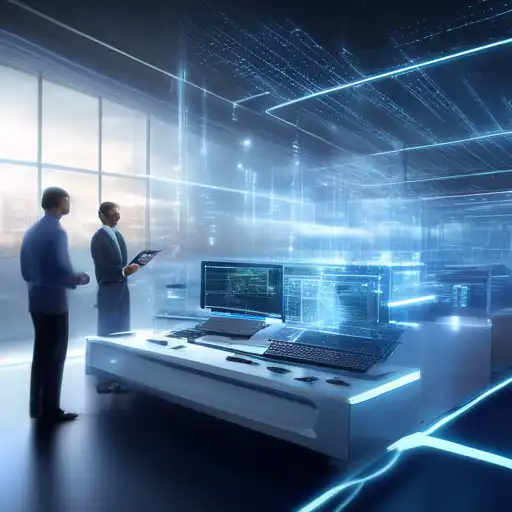Introduction to Edge Computing
In the digital age, speed and efficiency are paramount. Edge computing emerges as a transformative technology, bringing data processing closer to the source of data generation. This paradigm shift not only enhances speed but also reduces latency, making it a cornerstone for the future of Internet of Things (IoT) and real-time analytics.
What is Edge Computing?
Edge computing is a distributed computing framework that brings enterprise applications closer to data sources such as IoT devices or local edge servers. This proximity to data at its source can deliver strong business benefits, including faster insights, improved response times, and better bandwidth availability.
Key Benefits of Edge Computing
- Reduced Latency: By processing data near its source, edge computing significantly cuts down the delay in data transmission.
- Bandwidth Efficiency: It minimizes the amount of data that must be moved to the cloud or data centers, thereby saving bandwidth.
- Enhanced Security: Local data processing can enhance privacy and security by keeping sensitive information within the local network.
- Scalability: Edge computing allows for scalable solutions that can grow with your business needs without significant infrastructure changes.
Edge Computing vs. Cloud Computing
While cloud computing has been the backbone of data storage and processing, edge computing offers a complementary approach. Unlike cloud computing, which relies on centralized data centers, edge computing processes data locally, at the edge of the network. This distinction is crucial for applications requiring real-time processing and decision-making.
Applications of Edge Computing
Edge computing is revolutionizing various industries by enabling faster and more efficient data processing. Some notable applications include:
- Autonomous Vehicles: Real-time data processing is critical for the safety and efficiency of self-driving cars.
- Smart Cities: Edge computing facilitates the management of traffic lights, surveillance, and other urban services in real time.
- Healthcare: Wearable devices and remote monitoring systems benefit from the immediate processing of health data.
- Retail: Personalized shopping experiences are enhanced through real-time analytics and inventory management.
Challenges and Considerations
Despite its advantages, edge computing presents challenges such as the need for robust security measures, the complexity of managing distributed systems, and the initial cost of infrastructure. However, with continuous advancements in technology, these challenges are being addressed, paving the way for wider adoption.
Conclusion
Edge computing is setting the stage for a new era of data processing, offering unparalleled speed and efficiency. As businesses and technologies evolve, the adoption of edge computing is expected to surge, making it an essential component of modern IT infrastructure. Embracing this technology now can provide a competitive edge in the rapidly changing digital landscape.
